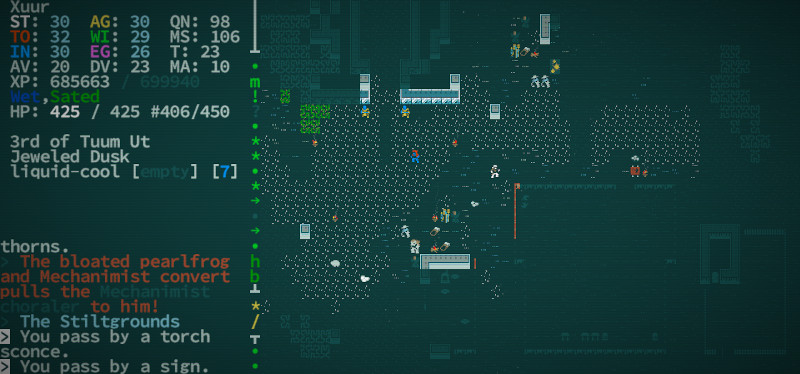David Stark / Zarkonnen: minecraft
- Block Size in Roguelikes
How big is a tile in a roguelike or similar game? What shape does it have?
I've been playing (and modding) a lot of Caves of Qud, so this is something I'm thinking about again. I'd love to see or make a roguelike where the levels are truly three-dimensional rather than 2D levels connected by staircases. Qud has some nods to three-dimensionality. Brogue has some more. Dwarf Fortress is 3D except that dwarves still don't understand about things like, for example, rooms that are taller than one floor.
So let's define the size and shape of these tiles.
- Interdependence in Minecraft: A mod
In this post, I'm going to describe how I would large-scale mod Minecraft to make it better, especially for a more engaging and social multiplayer experience. This is a complete pie-in-the-sky thing, as it's probably far too complicated for me to create.
- Dwarf Fortress, the Great Ancestor
A few months ago, I got introduced to Caverna at a board game evening. Caverna is pretty much "Dwarf Fortress: The Board Game" in that you run a group of dwarves digging out caverns, creating a living space, mining and farming. Unsurprisingly, this got me to start playing Dwarf Fortress itself again.
- Game Concept: Voxel Expedition
Something I've been chewing on for a while is how to make an "adventure" game that is more about travel than about fights or isolated puzzles. If you look at something like Tolkien, a lot of the adventure is about getting from A to B, rather than fighting things or figuring stuff out. But in adventure and roleplaying games, the focus has been on the latter two because it's less clear how to do the former. How do you make getting from A to B interesting?
- Don't Starve

On the advice of Twitter, I have finally bought and played Don't Starve. I like it a lot. Here's how it fits into my earlier thoughts about survival games:
- Beyond mere survival
Once you have survived in a survival game, what do you do? You have found or made clothing, shelter, a steady source of food, means to defend yourself and heal yourself. You have mapped the dangers of your environment and can defeat or avoid enemies. What comes next?
- Addendum on pricingOn reflection, I think the adjusting prices thing is going to have to be a bit more detailed than just reducing everything by X%.
- Subtly better villagersI've been playing a bit of Minecraft again, and in my most recent game, am concentrating on trading with the villagers. This turns out to be quite fun, because their changing trade demands produce incentive to do things like farm animals or look for certain items.
